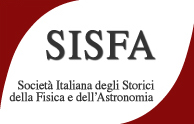Speaker
Description
The amount of rainfall over a certain territory within a specific time interval has always been highly relevant for understanding hydrogeological and atmospheric phenomena. Its importance is steadily growing due to the need to monitor and study climate change. While the analog rain gauge for measuring cumulative rainfall may seem like a simple graduated container, the choice of its shape and its calibration involves some significant aspects. This is true from both a physical perspective, regarding the very concept of measurement and its accuracy, and a mathematical perspective, concerning the mathematical modeling of the instrument (e.g., substantial differences between constant-section and variable-section rain gauges). In this talk, we will propose an activity that links the analysis of instruments and historical data sets, in particular those of the Historical Weather Observatory of the University of Genoa, active since 1833, with a workshop activity proposed during A.Y. 2024/25 to secondary school teachers in a multidisciplinary training course. The focus of the activity is the analysis and construction of rain gauges as a cue to reflect on concepts such as rainfall flow, volume, and the assumptions underlying rain detection with an analog rain gauge. Furthermore, the analysis of historical and modern data on cumulative precipitation also opens up discussions on intense meteorological phenomena, including from a perspective of civic education.

